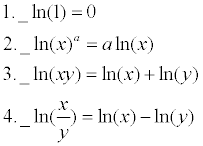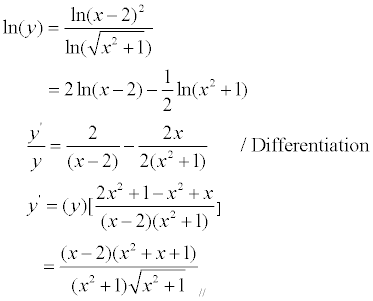| ¡@
¡@ |
¡@ 1.1 The definition of natural logarithmic (log, for short, in here) function
So by this definition. we obtain those following properties of natural log function: (1)The domain and the range of the function is
|
|
| ¡@ | (2)The function is continuous, increasing, and one to one | |
| ¡@ |
(3)
|







